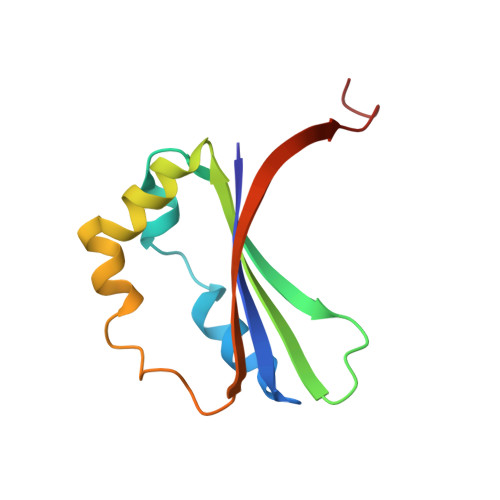Functional Diversity of Homologous Oxidoreductases-Tuning of Substrate Specificity by a FAD-Stacking Residue for Iron Acquisition and Flavodoxin Reduction.
Hammerstad, M., Rugtveit, A.K., Dahlen, S., Andersen, H.K., Hersleth, H.P.(2023) Antioxidants (Basel) 12
- PubMed: 37371954
- DOI: https://doi.org/10.3390/antiox12061224
- Primary Citation of Related Structures:
8AVH, 8AVI, 8C16, 8C3M - PubMed Abstract:
Although bacterial thioredoxin reductase-like ferredoxin/flavodoxin NAD(P) + oxidoreductases (FNRs) are similar in terms of primary sequences and structures, they participate in diverse biological processes by catalyzing a range of different redox reactions. Many of the reactions are critical for the growth, survival of, and infection by pathogens, and insight into the structural basis for substrate preference, specificity, and reaction kinetics is crucial for the detailed understanding of these redox pathways. Bacillus cereus ( Bc ) encodes three FNR paralogs, two of which have assigned distinct biological functions in bacillithiol disulfide reduction and flavodoxin (Fld) reduction. Bc FNR2, the endogenous reductase of the Fld-like protein NrdI, belongs to a distinct phylogenetic cluster of homologous oxidoreductases containing a conserved His residue stacking the FAD cofactor. In this study, we have assigned a function to FNR1, in which the His residue is replaced by a conserved Val, in the reduction of the heme-degrading monooxygenase IsdG, ultimately facilitating the release of iron in an important iron acquisition pathway. The Bc IsdG structure was solved, and IsdG-FNR1 interactions were proposed through protein-protein docking. Mutational studies and bioinformatics analyses confirmed the importance of the conserved FAD-stacking residues on the respective reaction rates, proposing a division of FNRs into four functionally unique sequence similarity clusters likely related to the nature of this residue.
Organizational Affiliation:
Department of Biosciences, Section for Biochemistry and Molecular Biology, University of Oslo, P.O. Box 1066, Blindern, NO-0316 Oslo, Norway.















